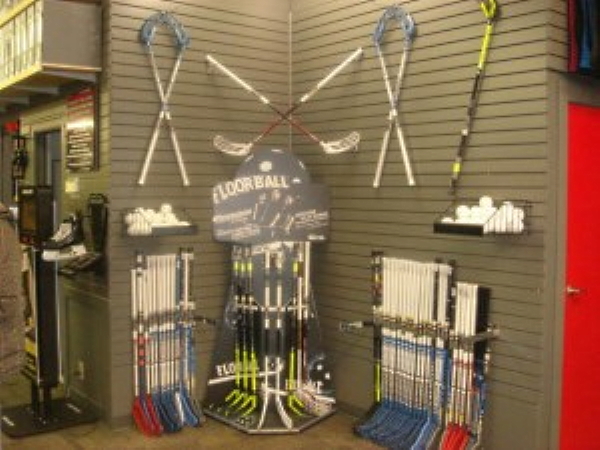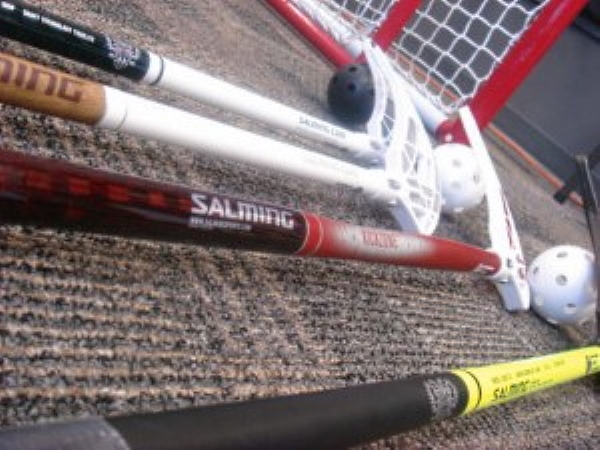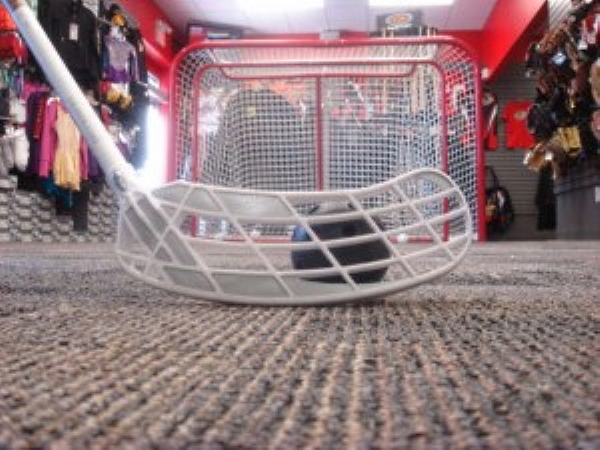Floorball: The Fastest Growing Team Sport
I have my long ago friends at the Sports Connection to thank for this extremely informative article. (I say long ago, because it seems they’ve disappeared since I borrowed this awesome article from them.) I love that they’ve provided a brief history for floorball, and that they go even more into the rules than other articles I’ve run across. So thanks, Sports Connection! And I hope my friends here find this enjoyable and helpful! ~ Dennis Chighisola

Floorball originated in the Scandinavian region in the 1970′s. Floorball is a fun, fast paced hockey game that is played on foot with lightweight sticks and a plastic ball. One of the absolute advantages of Floorball is that it is very easy to become a player. Anyone regardless of age, physical condition, or gender can grab a floorball stick and join in the fun. The object is to score a goal by directing the ball into the opposing team’s goal. This sport is growing fast and becoming very popular. Floorball is most popular in Sweden, Finland, and other European nations. It is actively played around the world in over 50 countries, including Australia, Japan, Canada, and the United States. The game is safe and fun for everyone.
It is commonly recognized that the roots of Floorball are to be found in the game of street hockey that was being played in Canada and The United States during the 1960′s and 70′s. Following the growth of the National Hockey League (NHL), street hockey developed as a cheap alternative to ice hockey for youngsters.
A Brief Introduction to Floorball
Game Area:
Floorball can be played indoors or outdoors, preferably using a rink of size 40 x 20 meters (131 x 65 ft). Height of the surrounding board is 50 cm or 20 inches. The goal is 115 cm high and 160 cm wide (45” x 63”).
Play Time:
Just like ice hockey, the game time is made up of three 20-minute periods with a 10-minute intermission between each period.

Teams:
A team is allowed 20 players on its roster. Five field players per team are allowed in the rink plus a goalie who plays without a stick. You can play without a goalie in which case the team can play with 6 field players. Each field player has a stick and attempts to pass and shoot a plastic ball which weights 23 grams and is 7 cm in diameter (2-3/4”).
Rules:
If a field player commits one of the following infractions, a referee will award a free shot to the opposing team or remove the offending player from the rink to serve a 2-minute minor penalty:
–Holding, shoving, checking, blocking or tripping an opponent
–Hitting, blocking, lifting, pushing down or kicking an opponent’s stick
–Hitting the ball with the stick or foot above the level of the knee
–Lifting the stick above waist level
–Kicking the ball twice
–Touching the ball with the hand
–Jumping up to reach the ball
–Playing the ball with any part of the body other than feet
Equipment:
Field players have a stick which can range from 65 to 104 cm long. When buying a new floorball stick, the length is very important. The stick should reach your belly button or just a little above. If the stick is too short, you have less playing range and it adds stress to your back since you will be constantly leaning over. If the stick is too long, your stick handling will be slower and you will lose power in your shots.

When determining shaft stiffness or flex, we are referring to how much the shaft is bent when you apply force to the stick. For all floorball manufacturers, the force is standardized at 30Nm. Stiffness is measured in millimeters of bend. The less the shaft is bent for the given force, the stiffer it is. Flex range for our sticks ranges from 24 for an extra stiff stick to 36 for a soft stick.
Face, Lie and Cavity:
These refer to various blade categories. Blade face ranges from 2X to 7X and indicates the curvature of the blade from heel to toe. An open face allows you to get the ball up in the air more easily. Too much open face might lead to shooting the ball too high. Cavity is a measure of the curvature of the blade from top to bottom when held horizontally. More cavity increases the ball velocity when firing wrist shots. Less cavity improves passing ability. You can modify the face and cavity of your stick by heating the stick with a hair dryer and forming it around a solid ball. Lie is the angle between blade and shaft. With a higher angle, you play the ball closer to your body.
Not just a team sport! Pro’s all over the NHL are using floorball sticks as training aids or warm up tools to help “soften” their hands before a game. Its a great way to SAFELY work on stick handling indoors or outdoors. Best of all, Mom and Dad’s drywall will be safe!!
~ SportsConnection
As with many other of my posts, I’ve included the above as food for thought, Over recent years floorball has really gotten a foothold in North America, and especially in Canada. Some NHL teams have helped organize floorball leagues as a way of expanding their fan base at the grassroots levels. Truly, it’s easy as pie to organize a floorball league, mainly because a high skill level isn’t required, and the cost to get going can be almost minimal.
Oh, and the next time you see an NHL player with European roots score what some announcers might call a “lacrosse goal”, it’s a lot more likely that the scorer had grown up in floorball. ~ Dennis Chighisola